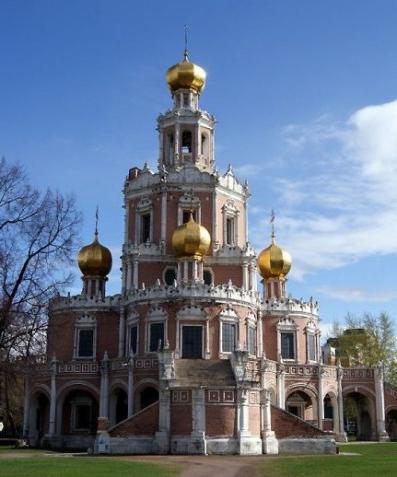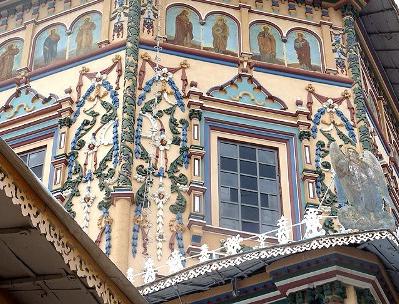The basic rule for the emergence of new architectural forms is the reflection of social processes. Of course, the wording is approximate, non-specific, but the Moscow Baroque style appeared precisely against the background of the events of the late XVII and early XVIII centuries. In Russia at that time, society gravitated toward everything progressive. The spirit of Peter's endeavors also touched on architecture. Temples throughout the whole of Russia were built, large and small. The merchants who built the churches and cathedrals were mainly wealthy, everyone wanted to leave a memory after themselves.

However, noble nobles tried to keep up. For example, the ancient family of the Naryshkins, relatives of Peter the Great on the maternal side, also took up the construction of churches after the long-standing confrontation of the Naryshkins and Miloslavsky ended. In this struggle for influence at the royal court, the Naryshkin family defeated, however, without any special consequences for the Miloslavsky family. Nevertheless, there was a reason for the triumphant construction of churches and cathedrals in all estates belonging to the Naryshkin family.

Several churches were built in the style of the West European main architectural order, but significant decorative additions were introduced into the exterior design, which laid the foundation for a new style called the Naryshkin Baroque or Moscow Baroque. The most remarkable example of this style is the Church of the Intercession at Fili. She is not like any temple of that time. The principle of construction is tiered: an octagon on a four with vaulted ceiling for eight trays.

Above is the bell tower in the shape of an octagonal drum. The belfry is crowned with a faceted head - gilded, with a cross. The lower tier, the quadrangle, is surrounded by four semicircular apse from all sides. Each is crowned by a gilded dome. A gallery-graveyard runs around the entire circumference of the church. This temple alone deserves a separate characteristic of the style; architects applied such an unusual architectural solution. The Naryshkinsky Baroque in Moscow is also represented by the Church of John the Warlike on Yakimanka and the Resurrection Church in Kadashi.
Unlike other architectural directions, the Barroco style attracts attention, or rather, attracts attention due to the concentration of rich external design. It is impossible to take your eyes off, I want to consider each line, to understand the play of light and shadows in the deep relief elements of the decor. Moscow baroque does not contain a single repeating
small architectural form. And although some signs of the Renaissance sometimes slip in the horizontal divisions of the church or cathedral, there is still the impression of complete exclusivity of the building.
Moscow Baroque has a rare property: it conquers space. In some incomprehensible way, the visual perception of the church expands to infinity. There can be any number of buildings around it, we look at them, but we see nothing but the Naryshkin church itself. Particularly impressive is the Temple of the Deposition on Donskoy. Rather simple architectural forms - a quadruple with five domes closely planted, a large refectory and, finally, a bell tower as part of the church. The architecture is no frills, for the Baroque style even modest, but the church breathes sacredness, and this is an integral sign of Moscow Baroque.